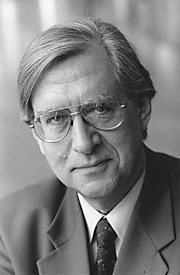The Piano in 19th-Century Society by Gilles Cantagrel
/ May 10, 2004
Version française...
 We live in an age in which we are surrounded by
public music. If you're reading this in a taxi, subway, aeroplane, restaurant,
train station, or shop--or even in the street--chances are that Muzak has
followed you, whether you wanted it to or not. This banal ambient soundtrack is
a very recent phenomenon, the extraordinary advances in music technology over
the last 50 years having made such proliferation possible. But how were things
before? We live in an age in which we are surrounded by
public music. If you're reading this in a taxi, subway, aeroplane, restaurant,
train station, or shop--or even in the street--chances are that Muzak has
followed you, whether you wanted it to or not. This banal ambient soundtrack is
a very recent phenomenon, the extraordinary advances in music technology over
the last 50 years having made such proliferation possible. But how were things
before?
Until the onset of the Industrial Revolution, the
gap between the aristocratic elite and the rural peasantry was firmly fixed. The
former group had their harpsichords and private concerts en salon; the
latter group had the fiddle in the evenings and, all too often, the fife and
drum in times of war. But as the Industrial Revolution progressed in the 19th
century, an educated middle-class arose--first in the urban areas of Britain,
and gradually throughout northern Europe--with the means and cultural
aspirations to invest in a new form of domestic art: the family piano. Since
there were no means to reproduce music automatically, people played.
This new form of cultural consumption included both
the public and the private sphere. Concert halls and orchestras were
established, as well as new lyrical forms that rejected the mythological
allegories so cherished by the ancien régime in favour of historical and
sentimental tales that had relevance for a wider audience. These works were
practised eagerly by the mothers and daughters of middle-class households, which
included pianos as soon they could afford them.
Along with the new instrument came new methods and
styles of music. Daring artists like Liszt, Hummel, Moscheles, Alkan, Thalberg,
Kalkbrenner, all virtuoso players and composers, paved the way. Their music runs
rampant in fantastic evocations of strange landscapes, atmospheres and moods,
replete with fine lines of paraphrase or great shards of bravura. But the cost
was high--many futile experiments exist alongside great works like Liszt's
Années de pèlerinage or the Sonata for piano in B minor.
One method that saw vast improvements, especially
in the hands of Liszt, was transcription. We have to recall that techniques of
sound reproduction have completely altered our approach to music. Throughout the
19th century, only those who lived in large cities had the chance to hear an
orchestra play. Public concerts were mostly small recitals, and the idea of
transcribing the compositions of other eras was relatively new. Symphonies and
musical societies took decades to grow, and a music aficionado in Paris, Vienna
or London might hear the Symphonie pastorale only once in a lifetime.
Liszt and other virtuosos devoted themselves to the creation of new scores,
transcribing the nine Beethoven symphonies or Berlioz's Symphonie
fantastique so they could be played on a piano--and then doing so on stages
throughout Europe. Thus private or historical works could be renewed and
disseminated in a variety of settings to new audiences.
The new methods also led to an explosive growth in
the repertoire of piano works and variations intended for enjoyment in private
salons--for dances, small gatherings and family occasions of all kinds. Music
publishers raced to keep up with a huge public demand for transcriptions of
symphonies, overtures, and operatic arias that could be played on solo or
two-player piano, perhaps with violin accompaniment, in a domestic setting. The
role of the two-player piano is especially telling--it allowed for much more of
the power and richness of orchestral language. And, most of all, this is by
definition a social instrument. It became a natural centre-point for
conviviality among friends and relations, instruction between master and pupil,
playing with a sibling, or flirtation between young adults. The two-player piano
was, in sociological terms, the TV room of the 19th century.
In musical terms, it represented the orchestra in
miniature. Its keys were the touchstone for teaching a new form of language,
moving a party of dinner guests to dance, and delighting listeners with
masterpieces that perhaps were written many years and many miles away--works by
Beethoven and Schubert, Fauré and Debussy, Chopin, Mendelssohn, Schumann and
Brahms. The piano also found itself the centrepiece of a new, fervidly practised
chamber music: duos with violin, trios, and quartets to which might be added a
group of singers reproducing the popular operatic arias and melodies of the
day.
The piano's central role endured right up to the
Edwardian era. Thereafter the telegraph, radio and Gramophone began to dominate,
since they could provide music that was ready-made--all you needed was
electricity. In 1900 alone, five million records were sold. By the 1950s, the
players of instruments had become the consumers of recordings. The development
of electronics and digitally recorded music has brought us to the present era,
in which recorded music is so ubiquitous and easily reproducible that we hardly
notice it any more. Except, of course, if you're the RIAA (Recording Industry
Association of America).
[Translation: Tim
Brierley]
Version française... |
|


